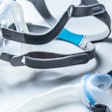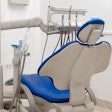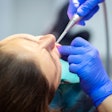
Sometimes it takes death to move a bureaucracy. Or two. When Chicago elementary school principal Georgette Watson died during root canal therapy in 2007, it was the second time in as many years that a sedated patient had died in a Chicago dental office.
So last week Illinois published draft rules that would more closely align its rules with ADA guidelines. But in the two years since the ADA issued its new guidelines, few other states have fallen in line, according to Sean Boynes, D.M.D., an assistant anesthesiology professor at the University of Pittsburgh School of Dental Medicine.
"Last time I checked, there were four that had done it in some way, shape, or form," Dr. Boynes said.
— Brent Adams, Illinois Division of
Professional Regulation
One reason is that the new popularity of oral conscious sedation techniques had already prompted many states to revise their regulations in the years leading up to the ADA's 2007 guidelines. "They don't want to spend the resources reviewing it again," he said.
Another issue is that some states don't like the ADA guidelines. For example, the guidelines define "supplemental dosing" for minimal sedation as 1.5 times the FDA's maximum recommended dose. Some states may be concerned about the liability issues of endorsing doses greater than what the FDA recommends.
But other states seem to march to the pulse of a different oximeter. Some require permits for oral conscious sedation, while others don't. Some categorize sedation by the administration route; others by the patient's state of consciousness. Some states don't require any permit at all, Dr. Boynes said.
The result is a hodgepodge of regulations that create challenges for dental educators trying to prepare their students to practice in any state and headaches for any dentist who wants to move a practice across state lines. "It's very convoluted," Dr. Boynes said. "If you're trying to train someone, what standard do you pick?"
More training demanded
Despite the conflicting paths of different states, some broad trends have emerged, said Dr. Boynes, who has published an overview of state regulations and is working on an article identifying changes. In general, states are requiring more training. Specifically:
In 2004, states required a mean of 50 hours training for a conscious sedation permit and 1.02 years of advanced education for a general anesthesia permit, Dr. Boynes found. By contrast, in 2008, states required a mean of 60 hours for a conscious sedation permit and 1.98 years for a general anesthesia permit, he said.
Since 2004, the number of dental boards requiring advanced cardiac life support certification for permit status increased from 10 states to 38 (as of 2008).
Likewise, the number of dental boards requiring office inspections for anesthesia permit applicants increased from eight in 2004 to 49 in 2008.
The number of boards requiring continuing education for anesthesia permit renewal increased from two in 2004 to 21 in 2008.
The number of states requiring permits for oral conscious sedation increased from four in 2004 to 24 in 2008, but the average number of hours of training for these permits declined from 38.3 in 2005 to 27.3 in 2008.
Perhaps because of the increased requirements, the number of permit holders for the various categories of anesthesia and sedation decreased from 14,649 in 2004 to 10,068 in 2006. But the number increased again to 11,974 in 2008, possibly because more courses became available.
A contentious process
The experience of Colorado illustrates how requirements can end up so different from state to state. In Colorado, the Board of Dental Examiners this year proposed regulations that would have required dentists to get 60 hours training if they wanted to practice "minimal sedation."
After undergoing fierce criticism from some local dentists and a prominent blogger, the board is now proposing 16 hours of training, in line with the ADA's guidelines. The public has until today (September 30) to comment in writing on the new proposal. A public hearing will take place October 21.
"We're just waiting to see how things are going to unfold at that rulemaking hearing," said Maulid Miskell, the board's program director.
The new proposed rules would change the categories of sedation and anesthesia. Under the current system, different standards of training apply depending on whether the dentist uses general anesthesia and/or deep sedation, parenteral conscious sedation, or enteral conscious sedation. How much training was required for each of these types of sedation was unclear, which was one reason for revising the rules, according to Miskell.
More in line with the ADA guidelines, the new categories are local anesthesia, analgesia, anxiolysis (which licensed dentists can use without additional training); minimal sedation (for which 16 hours training are required); moderate sedation (for which 60 hours are required); deep sedation, and general anesthesia (for both of which an accredited residency or ADA-approved postdoctoral training program is required).
Deaths in Illinois
Meanwhile, Illinois dentists wishing to moderately or deeply sedate their patients would have to get more training than previously required -- and so would their staff -- in proposed regulations published last week by the Illinois Division of Professional Regulation.
The changes were prompted by the sedation deaths of two Chicago patients, a 5-year-old girl in 2006 and a 46-year-old school principal in 2007.
"The rules we filed aim to prevent the tragic outcomes that occurred in recent years," said Brent Adams, acting secretary of financial and professional regulation, in a news release. "We want to make sure dentists, dental hygienists, and dental assistants understand what is required of them during dental care."
The regulations would attempt to spell out more exactly what dentists must do, said Dave Marsh, director of government relations for the Illinois Dental Society. "They have taken out the subjectivity," he said.
But most dentists are already doing what the regulations would require. "This rule may be a little overkill, trying to deal with every possible scenario," he said. And dentists would be able to continue practicing what their current permits allow.
Like Colorado, Illinois is proposing to change the sedation categories. But Illinois is using only three categories: minimal, moderate, and deep (which also includes general anesthesia).
The new regulations would not affect dentists who practice minimal sedation, formerly called anxiolysis, in which patients take a mild tranquilizer such as Valium. But dentists applying for permits to practice moderate sedation (formerly called conscious sedation, with "altered consciousness; signs of sleep") would have to get 75 hours of training, up from 60 in the current regulations. The training would have to include advanced airway management, a more demanding course than the cardiopulmonary resuscitation in the current regulations.
During minimal sedation, the regulations also require the presence in the treatment room of two other staff members, who could either be dental assistants or dental hygienists. Dentists, hygienists, and assistants working on this level of sedation would have to be certified in basic life support for healthcare providers or an equivalent course. And they would have to get nine hours of anesthesia continuing education per renewal cycle, plus a current advanced cardiac life support or pediatric advanced life support certificate.
The dentists would also have to have specific equipment, including a defibrillator, emergency backup suction equipment, a laryngoscope, and an advanced airway device to isolate the trachea and facilitate positive pressure oxygen administration.
Dentists wanting to practice deep sedation in Illinois would have to meet requirements similar to those in the proposed Colorado rules.
The comment period for the Illinois regulations began September 24 and continues for 45 days. The Joint Committee on Administrative Rules then has another 45 days to make changes, after which time the rules go into effect.
A better way?
Since states aren't rushing to adopt the ADA guidelines -- or any other national standard -- Dr. Boynes recommends another option: a new sedation specialty. "Dentists should be able to perform anxiolysis," he said. "But once you get to moderate, that's where the specialty should come in."
He would grandfather current permit holders into the specialty so that a corps of licensed practitioners could train the next generation. But anyone else who wanted to administer more than nitrous or a single dose of oral sedation would have to pass board exams. "You could have uniform training programs," Dr. Boynes said.
But don't expect that to happen tomorrow.
Copyright © 2009 DrBicuspid.com



















